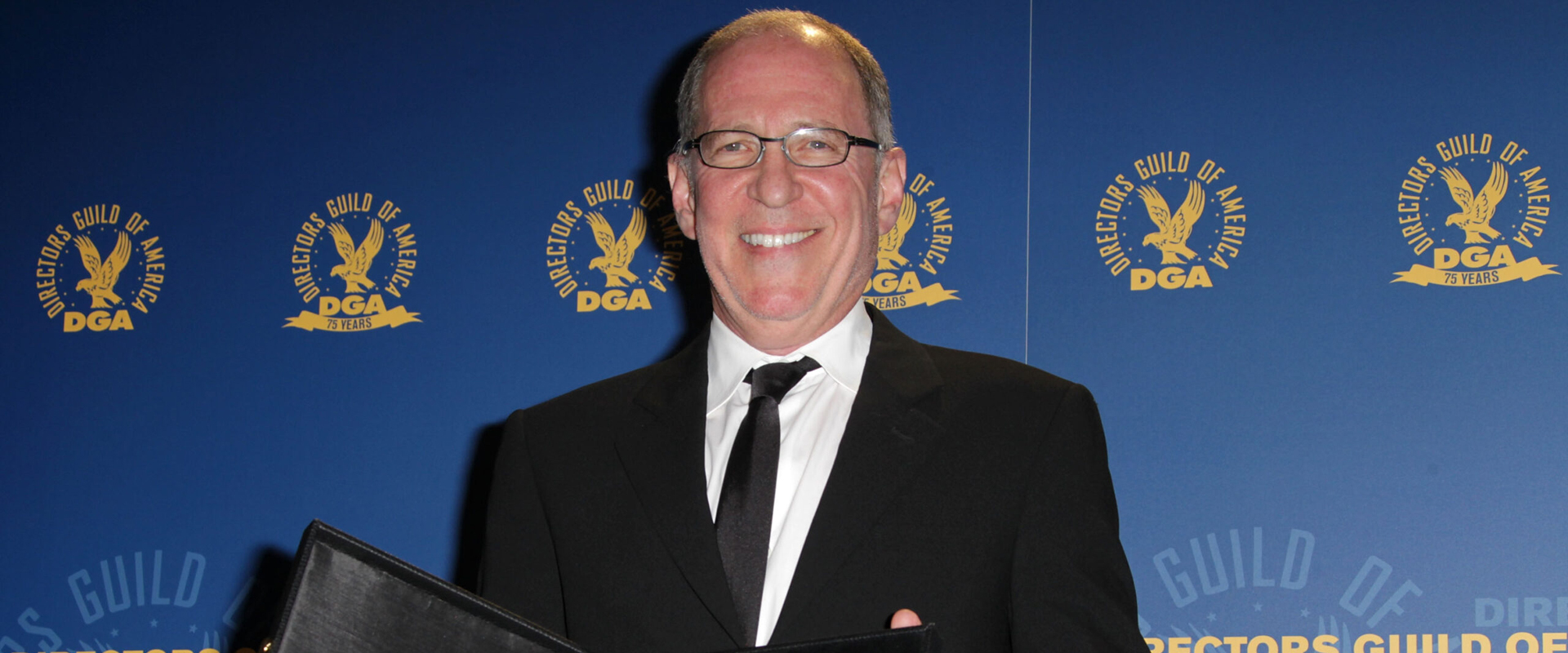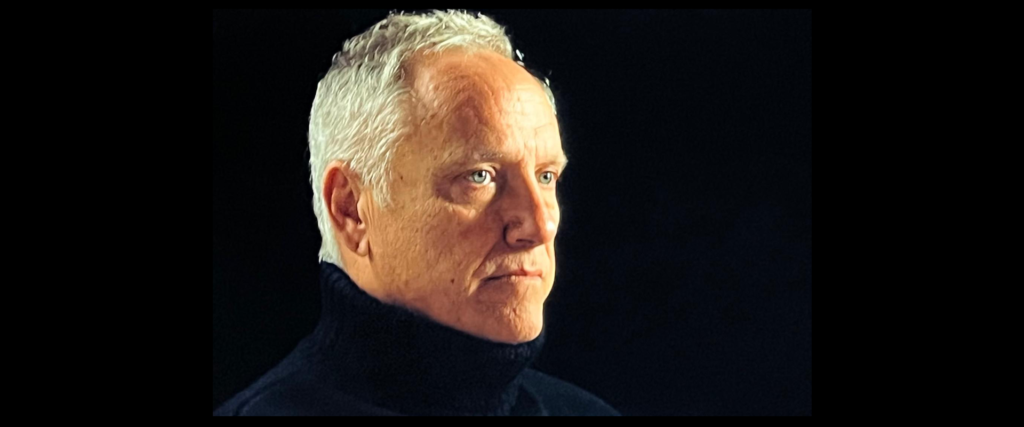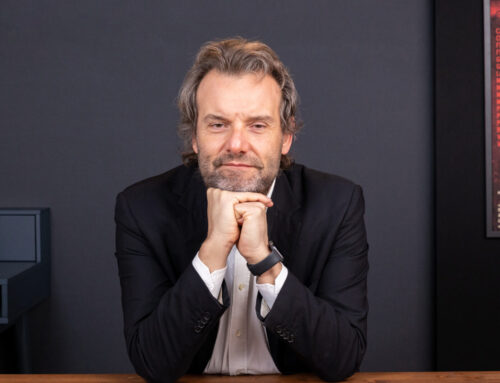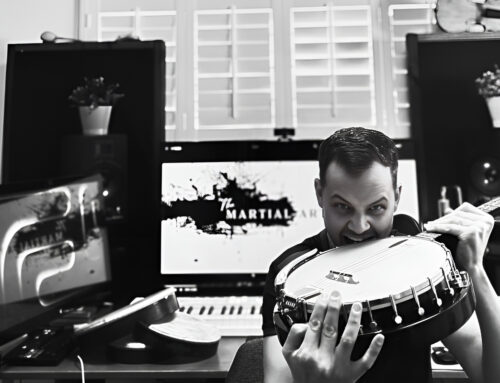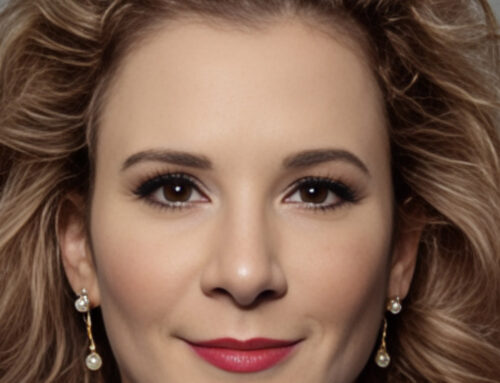Eytan Keller: a trailblazer in unscripted TV innovation
Interview of Eytan Keller, a multiple Emmy and Directors Guild Award-winning creator/producer/director,
Eytan, you’ve been at the forefront of some groundbreaking unscripted television formats, from Iron Chef America to Scariest Places on Earth and American Gladiators (which has recently been chronicled in the Netflix documentary series Muscles and Mayhem). In your opinion, what are the key elements that make a show stand out and engage a global audience, particularly now in a world with so many content options? And how has the landscape of unscripted television changed from the days before streaming platforms existed?
EK: The key in all formats, unscripted or scripted, is storytelling and character development. The way these stories are framed and the worlds that they are set in is also an important factor. In the unscripted world, you want to tap into relatable interpersonal dynamics that an audience can instantly understand and want to be along with for the ride, so to speak. Honestly, success is a combination of choices based on experience but overwhelmingly it’s the result of a lot of luck. Ultimately, no one knows what will resonate with audiences, therefore making this business a very risky high stakes game of chance. The only thing that has changed with the advent of steaming has been the increased volume of content ordered and in some cases the budgets are also higher. That said, this era referred to as “peak tv” seems to have entered a slowdown for many reasons. It started with the pandemic then the industry strikes were long and difficult, audiences are shifting their viewing habits and as a result the major platform are dealing with financial issues triggering new prospects of consolidation. We’re all hoping that this will improve in 2025.
You have a remarkable history of pioneering technologies in television, particularly with the integration of AR, VR, and XR, such as in Secrets of the Cryptkeeper’s Haunted House and Iron Chef: Quest for an Iron Legend. How do you see these immersive technologies evolving in the future of unscripted TV, and how might they continue to enhance the viewer’s experience and production processes?
EK: My pioneering use of technology has always been in the interest of better and more dynamic storytelling. It has never been driven by technology in and of itself. Most importantly the use of these technologies must be seamlessly integrated into the visual narrative of the project. They must never become the “star” but give the viewers the ability to further immerse themselves in the unfolding dramas.
Having worked with major U.S. networks and now seeing your success with global platforms like Netflix, how has the shift to streaming impacted your approach as a creator and producer, especially in terms of audience engagement, storytelling, and production processes?
EK: The shift to streaming has brought about some significant changes in the way content is consumed, but from a creative standpoint, my approach remains anchored in the fundamentals: storytelling and compelling characters. Streaming has simply expanded the playing field, offering more opportunities to experiment with different formats, genres, and episodic structures that might not have fit into the more rigid schedules of traditional broadcast television.
As I mentioned before, the increase in volume and, at times, budgets has been a big change. But while streaming platforms allow for more variety in content, they also demand more of it, which makes the challenge of standing out even more pressing. The international nature of platforms like Netflix also opens the door for more global engagement. Now, it’s not just about appealing to a U.S. audience; you’re thinking about how your story can resonate with viewers in Europe, Asia, and beyond.
Since you are teaching the next generation of film and television professionals at UCLA Extension, how do you identify true talent in your students? What qualities or traits do you believe are essential for someone to succeed in the ever-evolving world of unscripted TV and documentary filmmaking?
EK: I look for the same qualities in my students that I look for in people who have worked for me professionally. And that very simply is looking for qualities in them that reflect my own passions. It all starts with curiosity and the overwhelming desire to completely immerse themselves in every aspect of the profession and the willingness to sacrifice some immediate personal gratification for the future promise of meaningful achievements.
Last but not least, we’d love to know your thoughts on Italy as a potential market for a show like Iron Chef. Given the country’s rich culinary tradition and the abundance of food-related TV shows, do you see an opportunity to introduce a unique format like Iron Chef to Italian audiences? How would you tailor your pitch for an Italian outlet, and what elements of the show do you think would resonate most with Italian viewers?
Italy is actually the most perfect market for the Iron Chef format. It has an amazing history of culinary diversity and innovation. In addition, there are not only interesting stories behind the country’s culinary traditions and cooking techniques, there are also rich personal family stories that go back centuries to the times of the Roman Empire that would make this a unique opportunity to create and produce this series in Italy. The pitch is actually very simple, all you need to do is bring a map of Italy and the buyers will instantly see the authentic story possibilities that will be found region to region, chef to chef, ingredient to ingredient, family to family and of course nonna to nonna. I would be honored to be invited to collaborate on this format in Italy.
Share:
Interview of Eytan Keller, a multiple Emmy and Directors Guild Award-winning creator/producer/director,
Eytan, you’ve been at the forefront of some groundbreaking unscripted television formats, from Iron Chef America to Scariest Places on Earth and American Gladiators (which has recently been chronicled in the Netflix documentary series Muscles and Mayhem). In your opinion, what are the key elements that make a show stand out and engage a global audience, particularly now in a world with so many content options? And how has the landscape of unscripted television changed from the days before streaming platforms existed?
EK: The key in all formats, unscripted or scripted, is storytelling and character development. The way these stories are framed and the worlds that they are set in is also an important factor. In the unscripted world, you want to tap into relatable interpersonal dynamics that an audience can instantly understand and want to be along with for the ride, so to speak. Honestly, success is a combination of choices based on experience but overwhelmingly it’s the result of a lot of luck. Ultimately, no one knows what will resonate with audiences, therefore making this business a very risky high stakes game of chance. The only thing that has changed with the advent of steaming has been the increased volume of content ordered and in some cases the budgets are also higher. That said, this era referred to as “peak tv” seems to have entered a slowdown for many reasons. It started with the pandemic then the industry strikes were long and difficult, audiences are shifting their viewing habits and as a result the major platform are dealing with financial issues triggering new prospects of consolidation. We’re all hoping that this will improve in 2025.
You have a remarkable history of pioneering technologies in television, particularly with the integration of AR, VR, and XR, such as in Secrets of the Cryptkeeper’s Haunted House and Iron Chef: Quest for an Iron Legend. How do you see these immersive technologies evolving in the future of unscripted TV, and how might they continue to enhance the viewer’s experience and production processes?
EK: My pioneering use of technology has always been in the interest of better and more dynamic storytelling. It has never been driven by technology in and of itself. Most importantly the use of these technologies must be seamlessly integrated into the visual narrative of the project. They must never become the “star” but give the viewers the ability to further immerse themselves in the unfolding dramas.
Having worked with major U.S. networks and now seeing your success with global platforms like Netflix, how has the shift to streaming impacted your approach as a creator and producer, especially in terms of audience engagement, storytelling, and production processes?
EK: The shift to streaming has brought about some significant changes in the way content is consumed, but from a creative standpoint, my approach remains anchored in the fundamentals: storytelling and compelling characters. Streaming has simply expanded the playing field, offering more opportunities to experiment with different formats, genres, and episodic structures that might not have fit into the more rigid schedules of traditional broadcast television.
As I mentioned before, the increase in volume and, at times, budgets has been a big change. But while streaming platforms allow for more variety in content, they also demand more of it, which makes the challenge of standing out even more pressing. The international nature of platforms like Netflix also opens the door for more global engagement. Now, it’s not just about appealing to a U.S. audience; you’re thinking about how your story can resonate with viewers in Europe, Asia, and beyond.
Since you are teaching the next generation of film and television professionals at UCLA Extension, how do you identify true talent in your students? What qualities or traits do you believe are essential for someone to succeed in the ever-evolving world of unscripted TV and documentary filmmaking?
EK: I look for the same qualities in my students that I look for in people who have worked for me professionally. And that very simply is looking for qualities in them that reflect my own passions. It all starts with curiosity and the overwhelming desire to completely immerse themselves in every aspect of the profession and the willingness to sacrifice some immediate personal gratification for the future promise of meaningful achievements.
Last but not least, we’d love to know your thoughts on Italy as a potential market for a show like Iron Chef. Given the country’s rich culinary tradition and the abundance of food-related TV shows, do you see an opportunity to introduce a unique format like Iron Chef to Italian audiences? How would you tailor your pitch for an Italian outlet, and what elements of the show do you think would resonate most with Italian viewers?
Italy is actually the most perfect market for the Iron Chef format. It has an amazing history of culinary diversity and innovation. In addition, there are not only interesting stories behind the country’s culinary traditions and cooking techniques, there are also rich personal family stories that go back centuries to the times of the Roman Empire that would make this a unique opportunity to create and produce this series in Italy. The pitch is actually very simple, all you need to do is bring a map of Italy and the buyers will instantly see the authentic story possibilities that will be found region to region, chef to chef, ingredient to ingredient, family to family and of course nonna to nonna. I would be honored to be invited to collaborate on this format in Italy.

